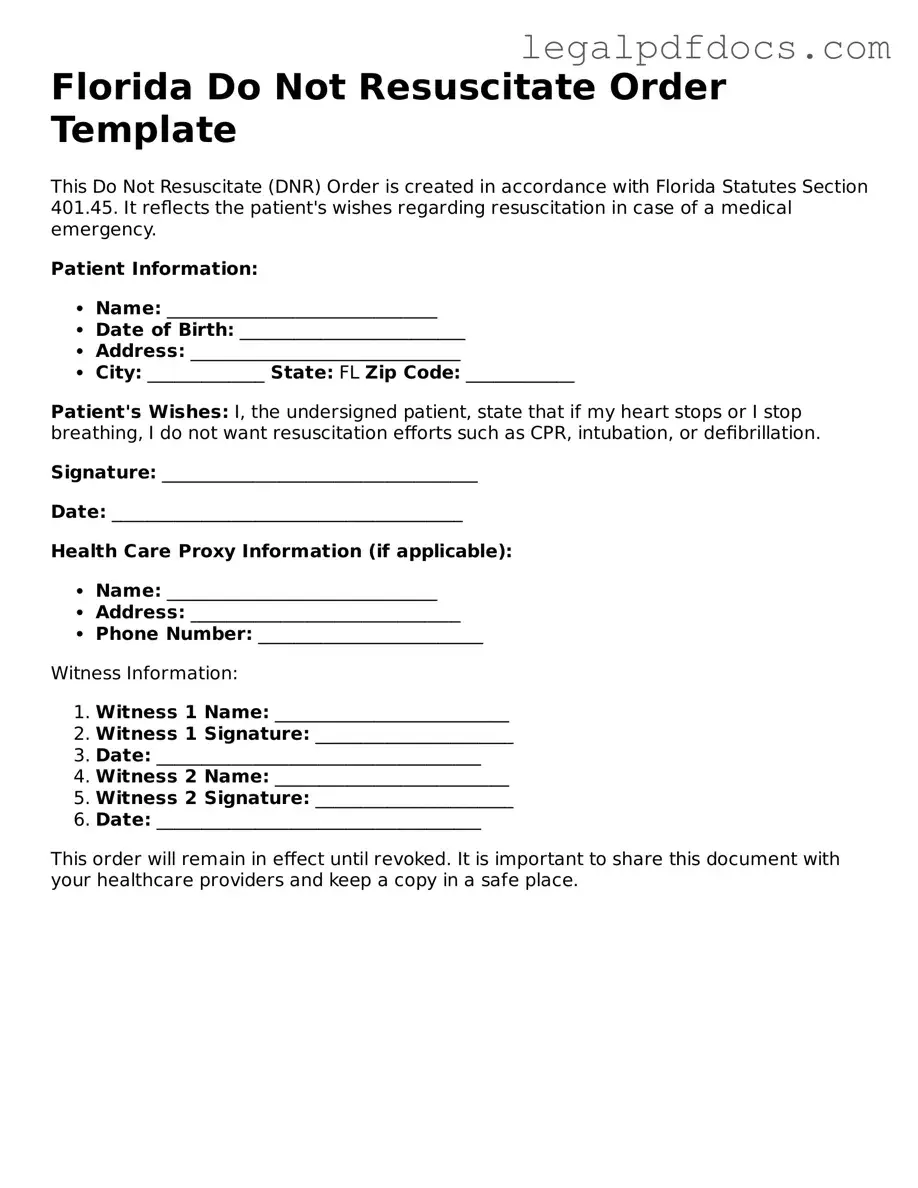In the state of Florida, the Do Not Resuscitate Order (DNRO) form serves as a crucial document for individuals who wish to communicate their preferences regarding resuscitation efforts in the event of a medical emergency. This form is particularly important for those with terminal conditions or serious illnesses who may not want to undergo aggressive life-saving measures. The DNRO must be completed and signed by both the patient and a licensed physician, ensuring that the individual's wishes are documented and respected by healthcare providers. Once in place, the form must be readily accessible, as it is typically required to be presented during medical emergencies to guide first responders and medical personnel. Understanding the nuances of this form, including the process for its completion and the implications of its use, is essential for individuals and families facing difficult healthcare decisions. Furthermore, it is important to note that the DNRO can be revoked at any time, allowing individuals to retain control over their medical care preferences. By being informed about the DNRO, patients can make empowered decisions that align with their values and desires for end-of-life care.
